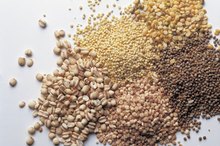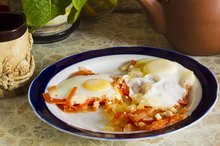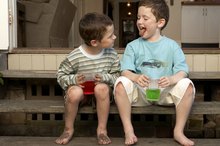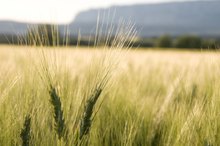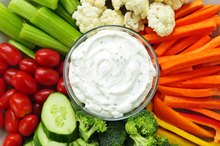What does fact checked mean?
At Healthfully, we strive to deliver objective content that is accurate and up-to-date. Our team periodically reviews articles in order to ensure content quality. The sources cited below consist of evidence from peer-reviewed journals, prominent medical organizations, academic associations, and government data.
- Academy of Nutrition and Dietetics: Staying Away from Fad Diets
- FamilyDoctor.org: Nutrition for Weight Loss -- What You Need to Know About Fad Diets
The information contained on this site is for informational purposes only, and should not be used as a substitute for the advice of a professional health care provider. Please check with the appropriate physician regarding health questions and concerns. Although we strive to deliver accurate and up-to-date information, no guarantee to that effect is made.
What to Eat on the Waterfall Diet
If you're having trouble losing weight, one author claims it may be because of excess water rather than excess fat. In her 1999 book "The Waterfall Diet," naturopathic nutritionist Linda Lazarides details an eating plan she says will reduce the amount of fluid you retain and help you lose up to 14 pounds in a week 2. Because the Waterfall Diet contains highly restrictive guidelines for what you can and cannot eat and promises dramatic weight loss in a short time, it qualifies as a fad diet, according to the Academy of Nutrition and Dietetics 23. In addition, some experts say the diet is based on faulty science. Talk to your doctor before attempting any diet, especially if you have special health considerations.
Phase 1 Foods
Lazarides argues that the primary cause of water retention -- and excess weight -- is an allergy to certain foods 2. But registered dietitian Dee Sandquist, a former Academy of Nutrition and Dietetics spokeswoman, says that medical research does not support the idea that a food allergy alone causes weight gain. During the initial phase of Lazarides' Waterfall Diet, followers are instructed to eat only vegetables, fruit, brown rice, beans, nuts, seeds, fish, chicken and soy products like tofu for two months to eliminate potential allergens 2. All wheat-based grains, flour products like bread or pasta, dairy items, red meat, sugar, coffee, alcohol, eggs and processed foods are to be completely avoided.
Phase 2 Foods
Dr Gott's No Flour, No Sugar Diet
Learn More
During the second phase of Lazarides' program, Waterfall dieters add a previously forbidden category of food into their meals each week, watching for weight gain or symptoms like unusual fatigue, headaches or congestion. These symptoms are supposed to indicate that you are allergic to or have an intolerance of that particular food. Sandquist says that while a true food sensitivity can cause these symptoms, it may have no connection at all to weight gain. Phase 2 is four weeks. Wheat crackers, wheat flour or egg-free wheat pasta is added in week 1, while dairy products like cheese, yogurt and cow's milk are included in week 2. Week 3 allows eggs, and yeast can be added in week 4.
- During the second phase of Lazarides' program, Waterfall dieters add a previously forbidden category of food into their meals each week, watching for weight gain or symptoms like unusual fatigue, headaches or congestion.
Phase 3 Foods
The final phase of the Waterfall plan is designed to form the eating habits you'll follow in the future. Lazarides advises that 90 percent of your diet during phase 3 should be made up of only the foods that were allowed during phase 1. The remaining 10 percent of what you eat can include foods reintroduced during phase 2 or that were not allowed during the first two phases of the diet as long as they do not trigger symptoms or lead to weight gain. Sandquist cautions that if the foods you eliminate from your diet are replaced by higher-calorie choices -- high-fat gluten-free products, for instance -- you may continue to struggle with weight loss.
- The final phase of the Waterfall plan is designed to form the eating habits you'll follow in the future.
- Lazarides advises that 90 percent of your diet during phase 3 should be made up of only the foods that were allowed during phase 1.
Expert Insight
List of Foods for the Dukan Diet Attack Phase
Learn More
If you strictly adhere to the Waterfall diet and eat only the recommended foods during phase 1, it's likely you'll lose weight 2. You may also be more likely to become deficient in essential nutrients like iron and calcium, however. The restriction on cereal grains may increase the risk of zinc deficiency in vegans and strict vegetarians. FamilyDoctor.org recommends choosing a balanced low-calorie, low-fat, nutrient-dense diet that includes a wide variety of foods. Ask your physician for advice before starting the Waterfall diet 2.
Related Articles
References
Writer Bio
Michelle Kerns writes for a variety of print and online publications and specializes in literature and science topics. She has served as a book columnist since 2008 and is a member of the National Book Critics Circle. Kerns studied English literature and neurology at UC Davis.
